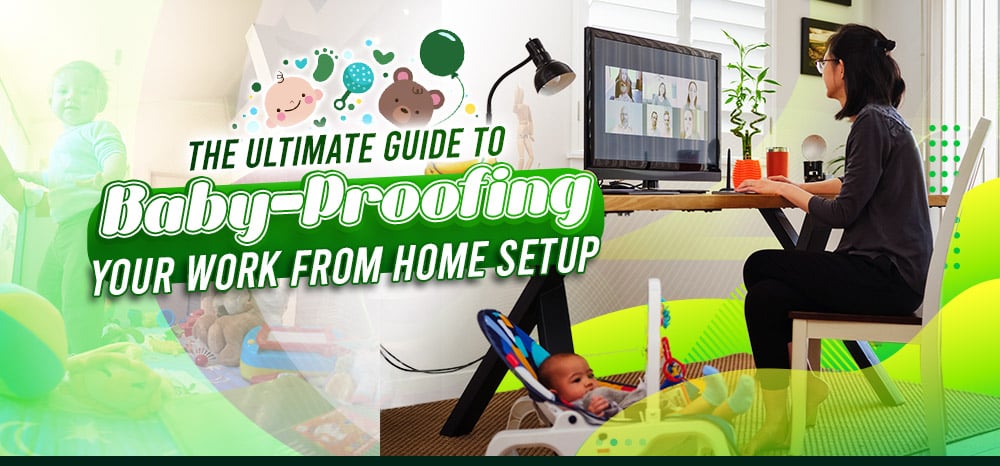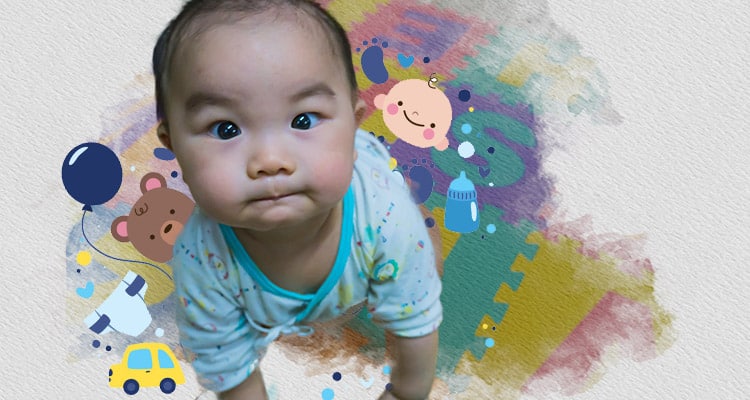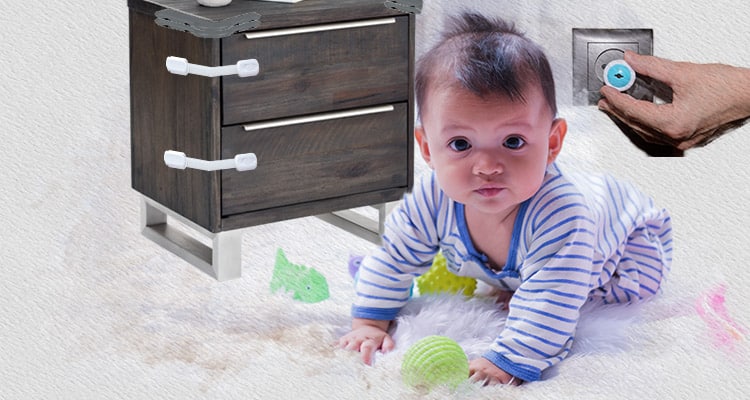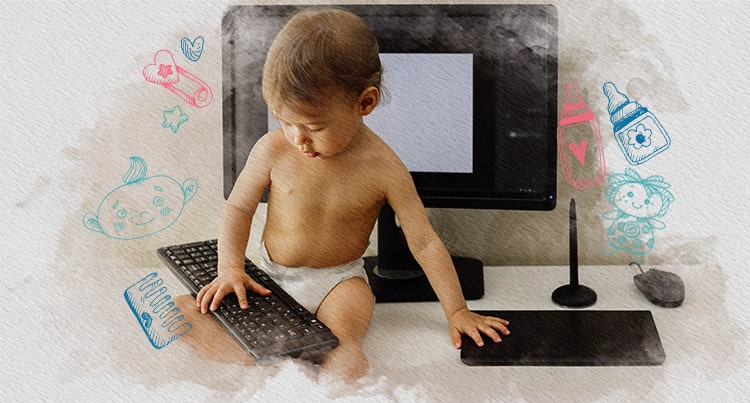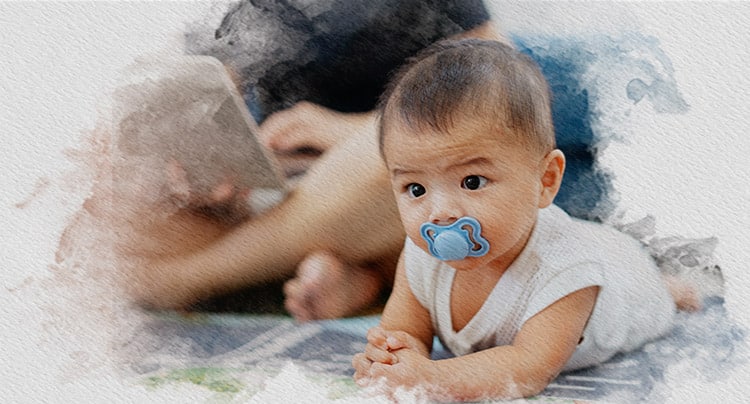Introduction
Welcoming a baby into your home is exciting and life-changing.
However, as your little one grows and becomes more curious, everyday household items can become dangerous hazards.
That’s why childproofing your home is essential—it keeps your child safe, whether you work from home or just want a secure space.
The importance of baby-proofing your work home setup
Babies are naturally curious and eager to explore their surroundings, but they lack the ability to recognize hazards.
Everyday objects such as sharp corners, electrical outlets, and tiny things they can choke on can lead to accidents.
By baby-proofing your workspace, you create a safe environment where you can stay productive while keeping your child protected.
When to start preparing for a baby-proof home
Ideally, you should begin baby-proofing during pregnancy or before your baby becomes mobile.
Most parents start making changes when their child begins to crawl, typically around 6 to 9 months.
However, early preparation can help prevent last-minute stress and ensure your home is ready before your little one arrives.
Key Areas of Focus for Baby Safety
Baby-proofing involves more than just installing safety gates. Key areas to focus on include:
- Living Room & Play Areas – Securing furniture, covering sharp edges, and organizing toys.
- Kitchen & Dining Area – Locking cabinets, securing appliances, and keeping hazardous items out of reach.
- Bathroom – Preventing slips, securing medications, and installing toilet locks.
- Bedroom & Nursery – Choosing safe bedding, anchoring furniture, and ensuring proper air circulation.
- Stairs & Doorways – Installing baby gates and ensuring door safety.
- Blocking Off the Office Area – Install baby gates or designate a specific workspace that’s off-limits when you’re not around
This guide will walk you through each of these areas step by step, providing baby-proofing tips to help with childproofing your work from home setup and creating a safe, worry-free environment for your baby.
Baby-Proofing Essentials: What You Need
Here’s a breakdown of key baby-proofing essentials:
Safety Locks for Cabinets and Drawers
Babies love to explore, and cabinets or drawers often contain hazardous items like cleaning supplies, sharp objects, and medicines.
Installing safety locks prevents access and minimizes the risk of accidents. Options include magnetic locks, adhesive latches, and sliding locks.
Corner Guards and Edge Bumpers
Sharp furniture edges and corners can be dangerous when babies start crawling or walking.
Baby-proof furniture with corner protectors and edge bumpers to add soft cushioning and prevent serious injuries from accidental bumps and falls.
These safety accessories are especially useful for coffee tables, countertops, and low shelves, reducing the risk of harm as your little one explores.
Outlet Covers and Electrical Safety
Exposed outlets can be dangerous for babies. Electrical outlet covers block access, preventing shocks.
Use cord organizers or safety boxes to secure power strips and keep wires out of reach.
Baby Gates for Stairs and Restricted Areas
Stairs, kitchens, and bathrooms can be risky for little ones. Safety gates for babies help prevent falls and keep them away from danger.
Install baby gates at stairways and doorways to create a secure barrier.
Use pressure-mounted gates for doorways and places where drilling isn’t ideal. For stairs, hardware-mounted gates offer a safer, more stable option.
Furniture and TV Anchoring Kits
Heavy furniture, such as bookshelves, dressers, and TVs, can tip over if a child tries to climb on them.
Securing these with anchoring kits keeps them in place, reducing the risk of serious injuries.
By implementing these baby-proofing essentials, you can create a safer home environment, giving you peace of mind as your little one explores.
Room-by-Room Baby-Proofing Checklist
Now that you have the baby-proofing essentials, this checklist will take you through each area of your home to spot hazards and prevent accidents using the items from the previous section.
Living Room & Kitchen Safety
The living room and kitchen are busy areas with many hazards. Taking the right steps will help keep your baby safe while they are in the area.
Living Room
- Secure furniture: Anchor bookshelves, TVs, and heavy furniture to prevent tipping.
- Cover sharp edges: Use corner guards and edge bumpers on coffee tables and low furniture.
- Hide electrical hazards: Install electrical outlet covers and keep cords out of reach.
- Block unsafe areas: Use safety gates for babies to restrict access to stairs or certain rooms.
- Keep small objects away: Remove choking hazards like coins, buttons, and small toys.
Kitchen
- Lock cabinets and drawers: Use safety locks to keep sharp tools, cleaning supplies, and breakables out of reach.
- Use stove knob covers: Prevent little hands from turning on burners.
- Secure appliances: Keep heavy or hot appliances away from counter edges.
- Cover sharp corners: Add bumpers to tables and counters.
- Avoid dangling cords: Tuck away cords from appliances like kettles and toasters.
Bathroom & Nursery Safety
The bathroom and nursery aren’t exempted from hidden dangers. Baby-proofing these areas helps keep your little one safe while they bathe, sleep, and play.
Bathroom
- Use toilet locks: Prevent drowning risks by securing the toilet lid.
- Keep medications and cleaning products out of reach: Store them in locked cabinets.
- Install non-slip mats: Reduce the risk of slips in the bathtub and on the floor.
- Set water heater temperature: Keep it at 49°C to prevent burns.
- Unplug appliances: Store hairdryers and electric razors safely away from water.
Nursery
- Secure furniture: Anchor dressers, cribs, and changing tables to prevent tipping.
- Choose a safe crib setup: Use a firm mattress, no loose bedding, and keep the crib away from windows.
- Cover outlets: Install electrical outlet covers to prevent shocks.
- Use cordless window coverings: Avoid blinds with cords to prevent strangulation risks.
- Keep small objects away: Remove toys or decorations with small parts that could be choking hazards.
- Use smart baby monitors: Keep an eye on your baby’s movements, sounds, and room temperature for added safety.
Outdoor & Backyard Safety
Your outdoor space can be a great place for your baby to play, but it also comes with potential risks.
Baby-proofing your yard helps create a safe environment for outdoor exploration.
Safety Tips:
- Secure gates and fences: Keep your yard enclosed to prevent wandering.
- Check for hazardous plants: Remove toxic plants that could be harmful if touched or ingested.
- Lock away tools and chemicals: Store gardening tools, pesticides, and fertilizers out of reach.
- Cover pools and water features: Use pool fences, covers, or safety alarms to prevent accidents.
- Create shaded play areas: Protect your baby from sun exposure with umbrellas or shaded spots.
- Inspect play equipment: Ensure swings, slides, and other structures are sturdy and safe.
Home Office
If you have a separate home office, it may seem safe, but it can still have hidden dangers for a crawling baby or curious toddler.
Baby-proofing this area ensures both safety and productivity:
- Secure cords and cables: Use cord covers or zip ties to prevent tripping and strangulation hazards.
- Lock drawers and cabinets: Keep important documents, sharp tools, and small office supplies out of reach.
- Anchor heavy furniture: Secure bookshelves, desks, and filing cabinets to prevent tipping.
- Use outlet covers: Protect little fingers from electrical shocks by covering unused sockets.
- Keep small items out of reach: store pens, paper clips, and batteries in closed containers.
Common Baby-Proofing Mistakes to Avoid
Even with the best intentions, parents can overlook key safety risks when baby-proofing their homes.
Avoiding these common mistakes will help create a truly safe environment for your little one.
Forgetting about hidden dangers (e.g., window blinds, cords)
Small, often-overlooked hazards like window blind cords, electrical wires, and small objects can pose serious risks.
Aside from these, you can also:
- Secure pet food and water bowls to prevent choking or drowning hazards.
- Keep trash cans covered or locked to prevent access to harmful items.
- Check under furniture and rugs for small objects that could be choking hazards.
- Ensure houseplants are non-toxic and placed out of reach.
- Keep doors and windows locked with safety latches to prevent accidental openings.
Relying too much on baby-proofing products without supervision
While child safety devices like stair safety gates, outlet covers, and childproof locks help reduce risks, they are not a substitute for active supervision.
Babies are naturally curious and may find ways around barriers or outgrow certain safety measures.
For example, if you have remote jobs and step away to take a call, you might assume your baby is safe because you installed cabinet safety latches.
However, if a latch is loose or your child figures out how to open it, they could still access harmful items like cleaning supplies.
This is why regular inspections and reinforcement of child safety devices are essential.
Along with supervision, these precautions ensure your baby stays protected in high-risk areas like the kitchen, bathroom, or near stairs.
A combination of vigilance and reliable safety measures is the best way to keep your little one safe.
DIY vs. Professional Baby-Proofing: What’s Best for You?
Deciding between DIY and professional baby-proofing depends on your budget, time, and home layout. Here are some key factors to consider:
When DIY baby-proofing is sufficient
DIY baby-proofing works well for homes with fewer hazards and when you’re comfortable installing safety devices like cabinet latches, outlet covers, and baby gates.
It’s a cost-effective option if you have the time to set up and maintain these protections as your baby grows.
Hiring a professional baby-proofing service
If your home has multiple risks, tricky layouts, or hard-to-secure areas, a professional baby-proofing service can help.
Experts can spot hidden dangers, install safety devices properly, and save you time while ensuring thorough protection.
Budget considerations
When baby-proofing your home in the Philippines, it’s important to evaluate both DIY methods and professional services for the best option:
DIY Baby-Proofing Costs
DIY baby-proofing can be a cost-effective approach. Many essentials, such as cabinet locks, outlet covers, and corner guards, are available at affordable prices.
Here’s a list of common baby-proofing products and their typical price ranges:
- Cabinet Safety Locks: Magnetic locks and adhesive latches are popular choices, with prices ranging from ₱200 to ₱500 per set.
- Corner and Edge Guards: To cushion sharp furniture edges, sets typically cost between ₱300 and ₱700.
- Outlet Covers: Self-closing outlet covers or plug protectors are available, with prices ranging from ₱150 to ₱400 for a pack.
- Baby Gates: Safety gates to block off stairs or restricted areas usually cost between ₱1,500 and ₱3,500, depending on the brand and features.
- Furniture Anchors: Kits to secure heavy furniture and prevent tipping are priced around ₱250 to ₱600.
- Door Knob Covers: These covers make it difficult for toddlers to open doors and typically cost between ₱200 and ₱400 for a set.
- Baby-Proofing Kits: Comprehensive kits that include various safety items can range from ₱800 to ₱2,000.
Professional Baby-Proofing Services
Exact pricing for professional baby-proofing services in the Philippines is unclear, but in other countries, it ranges from $252 to $780 (₱14,000 to ₱43,000) for a two-bedroom home.
A closer comparison is hiring an interior designer, who typically charges ₱800 to ₱2,000 per square meter. For a 100-square-meter home, this could cost ₱80,000 to ₱200,000.
So whether you go DIY or hire a professional, it depends on your budget, home layout, and time. DIY is cheaper and flexible, while professionals ensure a thorough, expert setup.
Maintaining a Safe Home as Your Baby Grows
Baby-proofing doesn’t stop once safety measures are in place—your child’s needs change as they grow.
You must regularly update safety precautions to match new stages of exploration and development:
Adjusting safety measures for toddlers
As babies grow into toddlers, their mobility and curiosity increase, requiring new safety measures beyond basic baby-proofing.
- Higher Reach, More Risks: Toddlers can now reach countertops, open cabinets, and climb furniture. Secure kitchen counters, store hazardous items even higher, and use childproof locks on drawers.
- Door and Window Safety: Install door knob covers to prevent them from opening doors unsupervised. Upgrade window locks and balcony barriers to prevent climbing accidents.
- Toilet and Trash Bin Locks: Toddlers may explore toilets and trash bins, so using locks prevents drowning risks and access to harmful waste.
- Furniture Climbing Prevention: As toddlers love climbing, anchoring bookshelves, dressers, and other furniture is even more essential to prevent tipping.
- Outdoor Safety: If they play outside, ensure gates are locked, toxic plants are removed, and play equipment is secure.
These extra precautions help keep your home safe as your child becomes more independent and adventurous.
Teaching early safety habits
As your child grows, baby-proofing alone isn’t enough—teaching basic safety habits helps them understand and avoid dangers.
- Explain Dangers Simply: Use simple words to teach what’s “safe” and “not safe.” For example, say “Hot, don’t touch” when near a stove.
- Practice Hand-Holding: Teach your toddler to hold hands when walking near streets, stairs, or crowded areas.
- “Stop” and “No” Training: Reinforce the meaning of “stop” and “no” to help them pause when they’re about to do something unsafe.
- Safe Play Areas: Encourage playing only in designated spaces and teach them not to climb onto furniture.
- Water Safety Awareness: If you have a pool or bathtub, teach them that going into open water can be dangerous without adult supervision.
- Role Modeling: Show safe behavior—like carefully crossing the street—so they learn by watching you.
Starting these habits early helps children develop awareness and responsibility for their own safety as they grow.
Periodic home safety checks
Baby-proofing measures can loosen, wear out, or become less effective over time. Regular home safety checks ensure that locks, gates, and other protective devices remain secure and functional.
Here’s a baby-proofing checklist to help maintain a safe environment:
- Cabinet and Drawer Locks – Check if adhesive or magnetic locks are still holding securely and replace any worn-out ones.
- Baby Gates – Ensure gates are firmly installed, especially at the top and bottom of stairs, and confirm they still latch properly.
- Furniture and TV Anchors – Inspect anchors to ensure they are tight and haven’t loosened with use.
- Corner and Edge Protectors – Look for any detached or damaged bumpers and replace them as needed.
- Electrical Outlet Covers – Confirm that outlet covers are intact and haven’t been removed or damaged.
- Door and Window Safety – Check locks and latches, fix any loose parts, and ensure window blind safety by using cordless blinds or securing cords out of reach.
- Bathroom Safety Features – Verify that toilet locks, faucet covers, and non-slip mats are still in good condition.
- Outdoor Safety – Inspect fences, gates, and outdoor play areas for potential hazards or gaps your child might squeeze through.
- Choking Hazards – Regularly check under furniture, between cushions, and on floors for small objects that could pose a choking risk.
- Pet and Trash Areas – Keep pet food, water bowls, and trash bins securely covered or out of reach.
By conducting these checks every few months, you can keep your home safe and adapt as your child becomes more mobile and curious.
FAQ
Got questions about baby-proofing? Here are quick answers to common concerns.
What’s the biggest overlooked baby-proofing hazard in most homes?
One of the most overlooked hazards is window blind cords—they pose a serious strangulation risk.
Between 1990 and 2015, nearly 17,000 children under six were treated in U.S. emergency departments for window blind-related injuries, with 271 fatalities resulting from strangulation.
Opt for cordless blinds or use safety wraps to keep cords out of reach.
Other common hazards include unsecured furniture, loose electrical cords, and accessible cleaning supplies.
Do I need to babyproof if I live in a small apartment?
Yes, baby-proofing is still important in any space.
Limited space can make hazards more accessible, so securing furniture, covering sharp edges, and installing outlet covers are still necessary.
You may need space-saving solutions, like multi-use safety locks or pressure-mounted baby gates, but a small space doesn’t mean fewer risks—just different ones to manage.
Conclusion
Baby-proofing your home is a crucial step in creating a safe space where your child can explore and grow without unnecessary risks.
By addressing potential hazards—securing furniture, covering sharp edges, and installing safety locks—you provide a secure environment that adapts to your baby’s changing needs.
For parents working remotely, baby-proofing becomes even more essential.
With the rise of virtual career opportunities and digital workplace roles, many professionals now balance their careers while caring for their little ones.
For instance, with Remote Staff, you can find location-flexible careers and remote-first job opportunities that let you work from home without compromising on safety or family time.
Ready to explore flexible remote work options?
Sign up with Remote Staff today and discover the perfect work-from-home opportunity that fits your lifestyle!

